
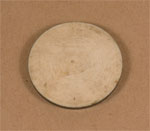

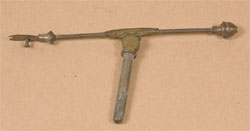
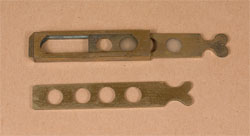

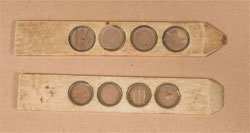
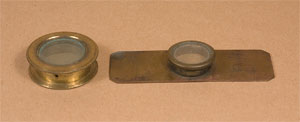
There are six specimen slides with this microscope:
A: Ebony sliders for opaque specimens (missing)
B: Ivory slides with prepared specimens, mostly plants
C: Brass sliders for aquatic specimens.
Brass live-specimen holders and their mounting frame. Concave glass was cemented in the holes, and a plane glass was placed over them, thus confining small mites for observation.
Prepared plant specimens in ivory sliders. Specimens are held in place by mica sheets and brass retaining rings.
Bone "Black and White" disc.
Two live-specimen devices. Left is a "bug-box" for holding and observing fleas and lice.
Right is an "aquatic" specimen slide.
Right is an "aquatic" specimen slide.
The traditional stage forceps. The spring metal forceps is broken.
Brass Fish Plate.
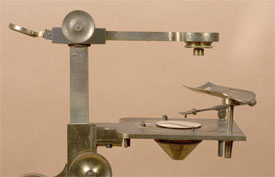
The axial adjustment of the support limb allows the user to center the objective over the fish plate.
Adams Universal Microscope Accessories

This perforated ring is possibly a component of an "eyeshade" device described by Clay & Court (1932): "There is a curious light-shade attached to the top of the eyepiece, which consists of a brass ring fixed to the top of a helical spring, the latter being joined to the top of the eyepiece; the space between the brass ring and eyepiece is enclosed by gathered black silk."